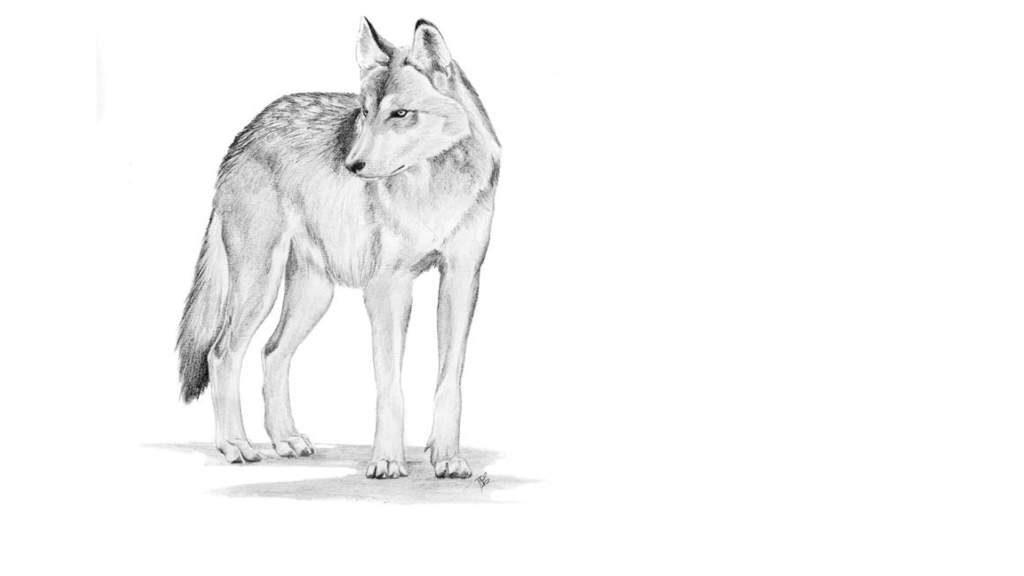The dire wolf is an extinct species of canine that was native to the United States during the late Pleistocene and early Holocene epochs (120,000–10,000 years).
When did the dire wolf become extinct?
It is thought that the dire wolf became extinct sometime between 8,000 and 16,000 years ago.
Where did the dire wolf live?
Dire wolf fossils have been found in North, Central, and South America.
If you are alone in the woods, the howl of the wolf must be one of the most unnerving sounds you can hear. Our fear of this sound is an old one that extends all the way back to prehistory, when the human race was more closely tied to the natural world. Thousands of years ago, the woods and wide-open spaces of North America echoed to not one species of wolf, but two.
One of these, the gray wolf (Canis lupus), is still with us, although its range is only a fraction of what it used to be. The second species, the dire wolf, became extinct thousands of years ago. The dire wolf is the largest non-domesticated canine that has ever lived, and thanks to the huge numbers of fossils that have been found, it is one of the best known of all recently extinct carnivores.
On average, the dire wolf was only slightly larger than the biggest gray wolf, at around 65 kg in weight and 1.5 m in length (Great Danes are around the same weight, but they are taller and slenderer). It had a slightly heavier build than the gray wolf and a relatively larger head. Interestingly, its legs were relatively shorter than those of the gray wolf.
If you compare the skeleton of a dire wolf to that of a gray wolf, the biggest differences are the skull and teeth. The skull of the dire wolf not only looks a lot heavier than the gray wolf’s skull, but it also contains more impressive teeth. The differences in the skeleton of the dire wolf compared with the living wolf give us some clues to how this extinct dog may have lived. The gray wolf is built for stamina and long-distance pursuit.
The dire wolf has long legs, a narrow chest, and a long, flexible back, enabling it to cover long distances in bounding strides. The dire wolf, on the other hand, had relatively shorter legs, and this has led some scientists to suggest that it was not much of a long-distance runner, although it could have undoubtedly burst into a sprint when the need arose.
The teeth of the dire wolf are more robust than those of the living wolf, and the well-developed cheek teeth were probably used to crack the bones of carcasses. Unfortunately, we can never know for sure how the dire wolf lived, but like the living gray wolf, it was very probably an opportunist, switching between active predation and scavenging, depending on the situation. Perhaps the dire wolf was a capable predator like its living relative, but with more of a preference for large, slow-moving prey.
To supplement hunting, the dire wolf probably scavenged whenever possible. Thousands of years ago, North America was dominated by megafauna—large mammals, including the mammoths, mastodons, giant deer, and many other species—almost all of which are now extinct. Instead of running to escape their enemies, many of these animals depended on their size for protection, and therefore speed and stamina may have given the dire wolf little or no advantage in hunting the herbivores of the megafauna.
However, a powerful bite and more robust body made it easier for these wolves to hang on to, and eventually subdue, large prey animals. The dire wolf may have been more heavily built than the gray wolf, but its brain was actually smaller in absolute terms. We know the gray wolf is a very sociable animal, living in tightly knit packs. Hunting as a team allows the gray wolf to catch and kill prey that would be far too big for a single wolf to bring down.
As a rule of thumb, animals with an elaborate social behavior have a relatively bigger brain than solitary animals. So, does the smaller brain of the dire wolf mean it was less capable, socially, than its extant relative? We don’t know for sure, but the discovery of huge numbers of dire wolf skeletons in the Rancho La Brea asphalt deposits in Los Angeles, together with the fact that all larger surviving canids are social, suggests that the dire wolf lived in packs.
How come the Americas no longer echo to the howls of two wolf species?
What happened to the dire wolf? It seems this canine was another casualty of the megafauna collapse that swept through the Americas between 16,000 and 8,000 years ago. The earth’s climate was going through some huge changes as the last ice age was coming to an end, and humans were spreading into the New World along dispersal routes that took them across the Bering land bridge and farther south and east by land and sea.
The herbivorous mammal megafauna of these continents appears to have dwindled and vanished in the face of these changes, but we shall never know the degree to which human hunting caused these declines. Changing habitats and disappearing prey, especially the loss of large herbivores due to ecosystem change as well as hunting by humans, eventually impacted the number of predators. The heavily built dire wolf, with its probable preference for large prey, felt the changes more than its relative, the gray wolf, and eventually died out.
-
The Rancho La Brea asphalt deposits of Los Angeles, California, have yielded the remains of more than 1,600 dire wolves—one of the most common predators at the site. In the site museum, there is an entire display wall made up of 450 dire wolf skulls.
-
The wolves in the asphalt deposits were trapped over a period of thousands of years and were attracted to prey animals that had also gotten themselves trapped in the sticky goo. The wolves probably pounced on the unfortunate prey, and they, too, found themselves stuck, with nothing but a slow, miserable death ahead of them.
-
How come so many dire wolves met a sticky end in the asphalt deposits of Rancho La Brea?
They must have been very numerous animals, very stupid, or overly aggressive. It seems that some predators were aware of the dangers of the pits, or at least were repelled by the odor of the tar. Whatever the reason, the treasure trove of dire wolf remains from Rancho La Brea gives us an unsurpassed record of the appearance and life of this animal.
Scientific name: Canis dirus
Phylum: Chordata
Class: Mammalia
Order: Carnivora
Family: Canidae







